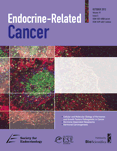Hydrogen peroxide induces DNA single- and double-strand breaks in thyroid cells and is therefore a potential mutagen for this organ
- Natacha Driessens1,
- Soetkin Versteyhe1,
- Chiraz Ghaddhab1,
- Agnès Burniat1,
- Xavier De Deken1,
- Jacqueline Van Sande1,
- Jacques-Emile Dumont1,
- Françoise Miot1 and
- Bernard Corvilain1,2
- 1Institut de Recherche Interdisciplinaire en Biologie Humaine et Moléculaire
2Department of Endocrinology of Erasme Hospital, Faculty of Medicine, Université Libre de Bruxelles, Bat C Local C4.145, Campus Erasme, 808, Route de Lennik, B-1070 Brussels, Belgium
- (Correspondence should be addressed to N Driessens; Email: nadriess{at}ulb.ac.be)
-
Figure 1
(A) Classification of the comets. Comet categories are defined by the size of the head (nucleus) and the length and intensity of the tail. Five stages are defined in alkaline conditions (upper panel) reflecting global DNA damage (SSBs and DSBs) and four stages in neutral conditions (lower panel) reflecting essentially DSBs. Stage 1, normal nucleus; stage 2, halo around the nucleus; stage 3–5, gradual increase in the length and intensity of the comet tail evolving in parallel with a decrease in the nuclear DNA content. (B) Comet assays performed on PCCl3 cells after incubation with 1 mM H2O2. Alkaline assays showed comets in stage 5 after labeling with ethidium bromide and an Ab ssDNA. In neutral assays, the tail of the comet was not labeled by the Ab ssDNA, even though almost all comets were in stage 3 after staining with ethidium bromide. This means that in the neutral condition, the DNA content in the tail results mainly from DSBs. Ab ssDNA, antibody against SSBs; SSBs, single-strand breaks; and DSBs, double-strand breaks.
-
Figure 2
DNA DSBs evaluation using phosphorylation of histone H2AX in PCCl3 cells an hour after irradiation (A and B) or addition of H2O2 in the medium (C and D). Phosphorylated (γH2AX) and total histones H2AX were detected with specific antibodies. (A) Western blot showing a dose-dependent effect of irradiation on H2AX phosphorylation. (B) Immunocytochemistry detecting phosphorylated histone H2AX foci (pink spots). (C) Western blot showing dose-dependent effect of H2O2 on H2AX phosphorylation. (D) Immunocytochemistry detecting phosphorylated histone H2AX foci (pink spots). DSBs, double-strand breaks.
-
Figure 3
DNA DSBs evaluation by phosphorylation of histone H2AX in human thyrocytes in primary culture an hour after H2O2 addition or irradiation. Phosphorylated and total histones H2AX were detected by western blotting with specific antibodies. DSBs, double-strand breaks. This western blot is representative of six independent cell cultures.
-
Figure 4
(A) Effect of H2O2 and irradiation on comet formation in PCCl3 cells with or without overnight preincubation with 10 mM BSO. Comet assays were performed in alkaline condition. Comparisons were made between scores obtained with and without BSO. Data are expressed as mean±s.e.m. of three experiments in duplicate. NS, non-significant; *P<0.05; **P<0.01; ***P<0.001; BSO, l-buthionine-sulfoximine. (B) Effect of a combined treatment by a H2O2-generating system and irradiation on comet formation in PCCl3 cells. The H2O2-generating system constituted DAO and various concentrations of proline. Cells were preincubated during 1 h with the H2O2-generating system before being irradiated. Induced DNA damage was measured immediately after irradiation by alkaline comet assay. Data are expressed as mean±s.e.m. of three experiments in duplicate. Statistical significance was calculated and illustrated after comparing 1) control score values and values obtained with various concentrations of proline and 2) score values obtained with 50 mM proline, 4 Gy irradiation and combined H2O2/irradiation treatment. DAO, d-amino-oxidase; *P<0.05; **P<0.01; ***P<0.001.
-
Figure 5
Kinetics of DNA repair after irradiation (A and B) and H2O2 treatment (C and D) in PCCl3 cells. Scores of DNA damage induced by 10 Gy irradiation were evaluated by the comet assay immediately after irradiation and then after various time intervals. Scores of DNA damage induced by 0.2 mM H2O2 were evaluated 15 min after the addition of H2O2 and then after various time intervals. (A and C) SSBs+DSBs measured in alkaline condition. (B and D) DSBs measured in neutral condition. Data are expressed as mean±s.e.m.; (n), number of measurements for each time interval; *P<0.05; **P<0.01; ***P<0.001; SSBs, single-strand breaks; and DSBs, double-strand breaks.
- © 2009 Society for Endocrinology













